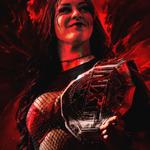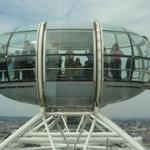JFK - Attentataufdeckung
12.07.2019 um 20:57Was ist denn KONKRET an der Verwendung von Zitaten "unseriös"?Nemon schrieb:Das beginnt, wie gesagt, bei der Aufmachung und der unseriösen Verwendung von Zitaten und Fotos.
Warum hängst du dich so an der Deutung am Foto auf?
Wenn LBJ so ehrlich und lieb war, müsste er doch irgendwo auf das Zwinkern eignegangen sein, oder?
Mach doch mal am konkreten Beispiel fest, was "unseriös" sein soll.
Warum verlässt du dich dann blind auf die LBJ-VersionNemon schrieb:Und nu? Er hat ihn angerufen. Was genau gesagt wurde, ist nicht dokumentiert.
Es ging um das Meme bzw. um den Mythos, dass die Idee der sofortigen, Präsidentenvereidigung in Dallas auf RFKs Vorschlag bzw. Iniative zurückginge.Nemon schrieb:Was willst du daraus machen? LBJ hat ihn eingebunden so oder so.
Das war aber nicht der Fall. LBJ selbst hatte schon die entscheidung getroffen, in Dallas vereidigt zuwerden und schon die Richterin bestellt. Er hatte also bereitsvollendete Tatsachen geschaffen, als er mit telefonierte RFK. Dass die Präsidentenvereidigung in Dallas auf den Vorschlag RFKs zurückginge ist eine Lüge aus dem LBJ-Lager.
Was ist für dich ein Belegt? Fakt ist, das drei Regierungsmitarbeiter die Nachricht über einen Einzeltäters bezeugten- folglich ist diese Nachricht eigentlich offiziell. Dass du du es zunächst heruntergespielt und nur von White geschrieben hast, sagt ja auch einiges aus.Nemon schrieb:Es konnte nie ein Beleg vorgelegt werden, wie gesagt. Etwas ohne Beleg sollte man nicht verwenden, als sei es Fakt.
Fakt ist auch, dass die Clifton-Version nicht die ursprüngliche Version darstellt.
Unvollständige oder gelöschte Tapes scheinen eine Spezialität der LBJ-Regierung und des LBJ Library zu sein. Die Aufzeichnung des LBJ-Hoover-Telefonats, in dem es über Oswalds Besuche und Anrufe beim sowjetischen Konsulat in Mexico City ging, wurde z.B. gelöscht, ein Transskript ist aber erhalten:
LBJ: Have you established any more about the visit to the Soviet embassy in Mexico in September?https://historymatters.com/essays/frameup/FourteenMinuteGap/FourteenMinuteGap.htm
Hoover: No, that’s one angle that’s very confusing, for this reason—we have up here the tape and the photograph of the man who was at the Soviet embassy, using Oswald’s name. That picture and the tape do not correspond to this man’s voice, nor to his appearance. In other words, it appears that there is a second person who was at the Soviet embassy down there.[1]
Auch die Aufzeichnung von "Oswalds" Telefonaten mit dem sowjetischen Konsulaten sind nicht mehr vorhanden- ein Schelm, wer Böses dabei denkt.
Ich "begründe" keine VT nur auf einem Blooper. Es ist aber ein Puzzlestück. Wenn der König unter nicht ganz geklärten Umständen ermordert wird sollte man sich zumindest das Verhalten desjenigen, der am meisten vom Mord profitierte, genauer anschauen- den Thronerben.Nemon schrieb:...du kennst ja alle Fotos der Szene und alle Beschreibungen. Dass du ausgerechnet auf dem Blooper eine VT begründen willst, ist unterirdisch und zynisch.
Man erkennt auch, dass du den Artikel gar nicht gelesen, sondern nur den Teil mit dem Bild angeschaut hast. Die restlichen 90 % des Artikels betrefen gar nicht das Bild.
Ist dir schon die Tendenz aufgefallen, dass bei den Ereignissen in Dallas und danach das "Blame-the-victim"-Spiel, in diesem Fall in erweiterter Form betrieben wird? "Blame the victim, his widow and his brother".
Was soll z.B. an folgendem Ausschnitt "unseriös"?
Conclusion number 1: Johnson's decision to be sworn in in Dallas delayed Mrs. Kennedy's departure.
This fact was met with much resistance. On 11-29-63, an AP article by Frances Lewine on Mrs. Kennedy (found in the Telegraph Herald) reported that "A little over an hour and a half after Kennedy had been taken to Parkland Hospital, his body was taken out a rear entrance. Mrs. Kennedy walked beside it and entered a cream colored ambulance for a police-escorted dash to the airport where the presidential jet plane waited to take the slain president home. Inside, 27 persons crowded into the gold-carpeted presidential compartment. Together, the Johnsons moved to press Mrs. Kennedy's hands in deep emotion as she arrived. Her first public appearance as the grieving widow was to stand there, blood stains still on her clothing, as Lyndon Johnson took the oath of office as President. It was mercifully short--just two minutes." Well, heck. What nonsense. This suggests that everyone, including Sarah Hughes, was piled into the presidential compartment waiting for Mrs. Kennedy's arrival on the plane.
An 11-30-63 article in the Deseret News presented a similar scenario. It held that a "beige Cadillac hearse backed into the hospital ramp" at 2:00, and was then loaded up with Kennedy's casket. The article then switched locations for its narrative to Air Force One and claimed "The body of President Kennedy arrived about a half an hour later and was lifted aboard the big jet." It then reported that Johnson was sworn-in aboard the plane at 2:38. Well, the net effect of this was to suggest (yet again) that Mrs. Kennedy arrived just prior to the swearing-in, and held up the swearing-in ceremony. Hmmm... Where did the approximate time for Mrs. Kennedy's arrival on the plane come from? Did someone provide the uncredited writer of this article false information, or did the writer of this article just guess the time of Mrs. Kennedy and the body's arrival, while assuming she'd arrived just before the swearing-in took place?
Other articles were equally curious. On 12-1-63, the Boston Globe ran an article on "Those Four Days That Changed History." It claimed: "The casket was closed and wheeled from the hospital, Mrs. Kennedy walking beside it. Declining to ride with the driver she climbed into the rear of the hearse with her husband's body and rode back to the airport where they had been so warmly welcomed a few hours earlier. Even ahead of the hearse, Johnson had been hustled under tightest security to the airport. Now he was waiting in the presidential conference room aboard the big jet, jammed with 25 other persons into a room 12 by 15 feet. At 2:18 pm the hearse pulled up and the casket was lifted aboard the plane. Mrs. Kennedy followed it, and then was taken into the conference room where she stood to Johnson's left, Mrs. Johnson to his right. Standing before them was US District Judge Sarah T. Hughes, 67, summoned urgently by telephone from her office. With the huge fanjet engines already whining, Johnson placed his left hand on a small leather covered Bible, raised his right hand and had the 36 word oath of office' administered by Judge Hughes." Well, there it was again: 2:18. Where did this come from? And, more to the point, was the person telling agents and reporters the casket arrived at 2:18 the same person telling reporters Mrs. Kennedy boarded Air Force One, and walked right into the swearing-in ceremony?
And then there's this. On 1-19-64, the Boston Globe published a second account of Johnson's "first hectic hours" that made an even stranger mistake. It reported that, upon reaching Air Force One, Johnson's "first order was to hold the plane on the ground until Mrs. Kennedy and the body of President Kennedy were ready. Plugged into the nose of the plane, as always, was a direct telephone connection to the White House in Washington. Through the White House switchboard, Mr. Johnson could reach anyone he needed. At 1:35 pm Mr. Johnson called Robert Kennedy at his home in Washington. The purpose of the call was both personal--to extend his condolences to the late President's brother--and official. Mr. Johnson wanted to know whether it would be legal to be sworn in at the Dallas airport before he flew to the capital. When the government's chief legal said it would be proper, Mr. Johnson decided to take the oath before take off. He reasoned that it would reassure the country and the world and would help stifle rumors that might otherwise have sprung up before he reached Washington. A second call went to Washington on behalf of Federal Judge Sarah Hughes, who had been summoned to swear in Mr. Johnson. Called from her home to the plane, she had no copy of the presidential oath. Carter called the Justice Department for it-and Deputy Atty. Gen. Nicholas Katzenbach dictated it at 1:45 pm out of a copy of the Constitution. Marie Fehmer typed it out and handed it to Judge Hughes. O'Brien told the President that Mrs. Kennedy wanted to be present at the oath-taking, and when all was ready she was called. At 2:38 pm, Mr. Johnson took the oath."
Well, did you catch it? Beyond telling us that Johnson called Kennedy within minutes of his arrival on the plane--something that would later be proven untrue--and telling us that Robert Kennedy advised Johnson to be sworn-in in Dallas--something Kennedy would later deny--the article claimed that Marie Fehmer received the words to the oath of office at 1:45--and handed them to Judge Hughes. Well, this was, according to Marie Fehmer's notes, 17 minutes before Hughes had even left for the plane!
So what was going on here? Was some person or entity trying to hide that Judge Hughes had arrived after Mrs. Kennedy, and that Mrs. Kennedy's departure had been delayed as a result?
And that's not nearly the last article in which this simple fact was denied, or concealed. No, the most recent article I've found to deny Mrs. Kennedy's departure was held up by Judge Hughes was published years after the writers of the article should have known better. On 11-20-88, the Dallas Morning News published an extensive overview of the assassination and aftermath. It presented the events in chronological order. Consistent with the reports of the Secret Service, it presented Mrs. Kennedy's arrival at the plane at 2:15. This was not a surprise. What was surprising, even shocking, however, was that the previous entry in the timeline was "2:12 p.m. Judge Hughes boards Air Force One." Well, where did that come from? I've looked far and wide and have uncovered no reason to believe she arrived any earlier than 2:30. Perhaps someone working on this article had read Fehmer's notes claiming Hughes called in at 2:02 and said she'd be there in 10 minutes, and had accepted Hughes at her word.
Yes, the "2:12" in this article, 25 years after the assassination, remains a mystery. Could it really be that the people writing and editing this article were unaware that Johnson and Hughes' delay of Mrs. Kennedy had long since bubbled to the surface?
In the aftermath of the assassination, the Associated Press put together a book comprising its photos of the events of November 22-25, 1963, and a narrative describing these events, written by four of its reporters. This book, The Torch is Passed, sold upwards of a million copies in December 1963 and January 1964. About the delay of Air Force One's departure, the reporters related first that Mrs. Kennedy and those gathered around her husband's casket at the back of the plane failed to realize Johnson was on the plane until they asked why the plane had not taken off upon their arrival, and were told by Acting Press Secretary Malcolm Kilduff that Johnson was on the plane and waiting to be sworn in as President. The reporters then defended Johnson's presence on the plane. They asserted: "Lyndon Johnson rightfully occupied the very private presidential sanctum with its desk, easy chairs and twin beds. There at his elbow was the telephone that could connect him, through the plane's complex communications apparatus, with any sector of the globe. Already, Lyndon Johnson was using that phone. It was the one instrument at hand that enabled him to take a quick firm grip on the reins of government."
But this was nonsense. I mean, really. This was the height of the cold war. If there was a problem with Kennedy's plane, would the President have been grounded? Of course not. If Kennedy's plane had been shot down, or the President incapacitated while overseas, would the Vice President have been forced to go without a plane? Of course not. It seems clear then that Johnson's plane was perfectly equipped to handle a crisis, and the writers of The Torch is Passed knew it, and were providing him with political cover.
Should one think the book pure propaganda, however, one should think again. After describing Mrs. Kennedy's arrival on the plane, and defending Johnson's taking over her bedroom, it reported: "It was 30 minutes before Lady Bird Johnson arrived with U.S. District Judge Sarah T. Hughes..." Well, this was incorrect on the first part--Mrs. Johnson arrived around the same time as her husband, albeit in a separate car--but it was almost certainly correct on the second. The swearing in took place at 2:38. Judge Hughes arrived just before this, around 2:30. If Mrs. Kennedy arrived 30 minutes before that it would mean she arrived around 2:00, the same time suggested for her arrival by Marie Fehmer's notes. Assuming Fehmer's notes were not its actual source, then, the timeline pushed in The Torch is Passed suggests Fehmer was indeed correct regarding the time of Mrs. Kennedy's arrival on the plane.
Fehmer was probably wrong, however. Shortly after 2:00, NBC's Robert MacNeil told a nationwide audience: "The President's body has just been carried out of the hospital in the bronze casket...It has been placed in an ambulance...I can hear the motorcycle escort outside with the ambulance starting up. And the President's body with some police motorcycle escorts is now pulling away from the hospital. It is about one and a half hours since he was shot. The President has been dead for about an hour and 7 minutes." So, there it is. From a live broadcast. The body left the hospital circa 2:00 to 2:07 (NBC would subsequently say it was at 2:05), and presumably arrived at the plane circa 2:10 to 2:17.
The Secret Service reports claiming Mrs. Kennedy and the body left the hospital at 2:04 were reliable after all.
Conclusion number 2: the mainstream media was incredibly slow to recognize that Johnson's taking the oath had inconvenienced Mrs. Kennedy.
Conclusion number 3: Mrs. Kennedy reached the plane within a few minutes of Judge Hughes' calling in.
Conclusion number 4: the actual times of Mrs. Kennedy's arrival at the plane, and of Judge Hughes' calling in, are not entirely clear.
Naja, ich würde eher von Empathielosigkeit und Narzissmus ausgehen...Nikto schrieb:Das Benehmen LBJ`s gegenüber Jackie, bereits kurz nach dem Attentat war ja nicht gerade das eine Gentlemans, sondern wohl eher das eines grobschlächtigen Cowboys der sich nimmt was er will … heutzutags würde man ihn wohl wegen Sexueller Belästigung drann bekommen, hehehe.







